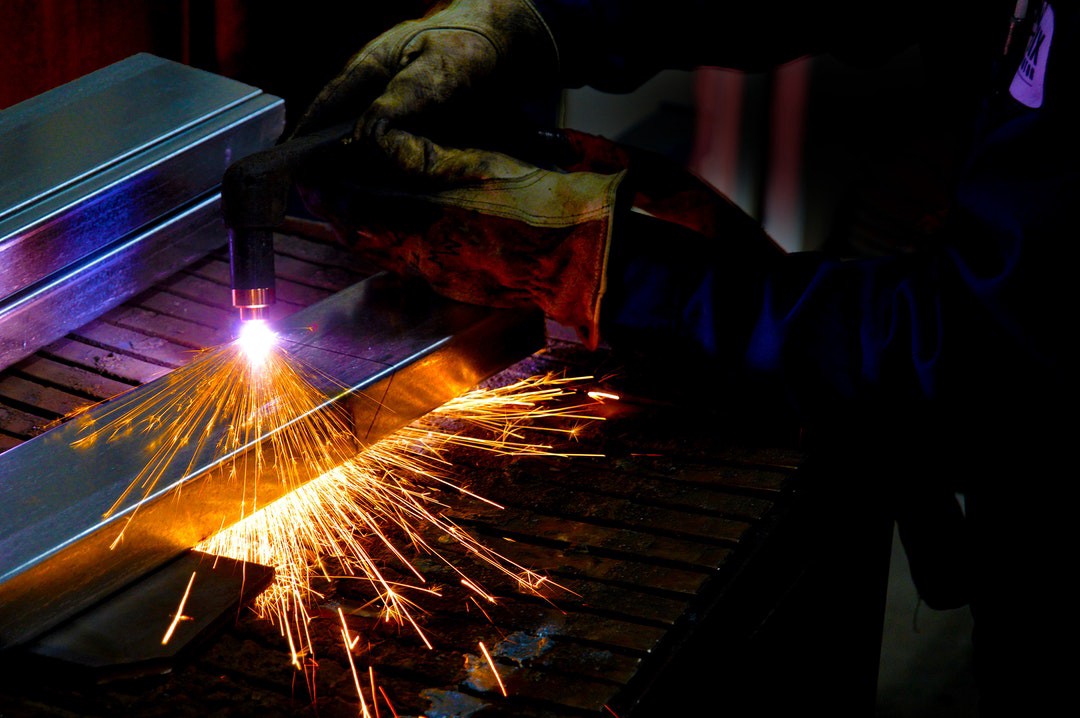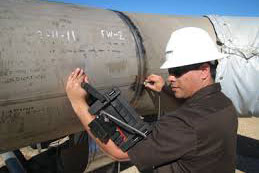Maximize Your Welding High Quality with Specialist Inspection Services in Gilbert Arizona
Maximize Your Welding High Quality with Specialist Inspection Services in Gilbert Arizona
Blog Article
Welding Assessment Demystified: Secret Procedures, Devices, and the Essential Function They Play in Keeping High-Quality Welds
Welding assessment functions as an essential backbone in the guarantee of architectural honesty and quality in welded joints, influencing different industries from building to manufacturing. This process is not just a rule; it incorporates vital strategies such as aesthetic exams and advanced non-destructive testing methods developed to discover issues that could jeopardize security. With a variety of specialized tools at their disposal, assessors play an important role in maintaining high requirements. The intricacies of these techniques and their effects for top quality guarantee remain often forgotten. What are the essential processes and devices that guarantee these criteria are upheld?
Relevance of Welding Evaluation
Ensuring the integrity of welded joints is vital in different markets, making the relevance of welding evaluation undeniable. The top quality of welds straight impacts the security, efficiency, and longevity of components and structures. In fields such as construction, auto, aerospace, and production, any type of failing in bonded joints can lead to devastating repercussions, consisting of architectural failures, equipment breakdown, and death.
Welding evaluation acts as a vital top quality control measure, making certain that welds fulfill defined requirements and governing requirements. It determines defects such as fractures, porosity, and insufficient combination that may compromise the strength of the weld. By spotting these problems early, welding evaluation can avoid pricey rework, hold-ups, and prospective security dangers.
Furthermore, welding assessment promotes conformity with market requirements and certifications, boosting the credibility of companies and their products. It additionally sustains constant renovation by providing useful feedback to welding employees, allowing them to improve their methods and procedures.
Ultimately, the significance of welding examination can not be overstated; it is crucial for keeping top quality welds, ensuring safety, and protecting investments throughout various sectors.

Secret Evaluation Processes
Effective welding examination relies on a series of key procedures created to review the top quality and stability of welds. These procedures incorporate both non-destructive and visual screening (NDT) approaches, making sure that any type of defects are recognized before they jeopardize architectural stability.
The initial step in the evaluation process is a thorough aesthetic examination, which permits assessors to assess welds for surface area flaws such as fractures, undercuts, and insufficient blend. Complying with aesthetic checks, different NDT strategies might be utilized, including ultrasonic testing, magnetic particle screening, and radiographic screening. Each technique supplies unique benefits; for example, ultrasonic testing can detect inner problems, while radiographic screening provides an irreversible document of the weld's inner framework.
Additionally, it is vital to validate compliance with relevant codes and criteria, guaranteeing that the weld satisfies industry requirements. This includes inspecting weld measurements and alignment, as inappropriate dimensions can bring about failings under lots.
Vital Tools for Inspection
Consistently utilizing the right devices is vital for attaining exact welding assessments. A thorough set of assessment devices helps make certain that welds fulfill rigorous high quality criteria and specs.
Among the primary tools is the aesthetic inspection gauge, which enables assessors to why not try this out evaluate surface problems, such as cleanliness and surface area coating, straight. Furthermore, calipers and micrometers are vital for determining weld dimensions and ensuring they conform to called for tolerances.
For even more thorough analyses, ultrasonic testing (UT) tools is important. This approach uses high-frequency acoustic waves to analyze and spot internal imperfections material thickness. Magnetic fragment screening (MT) and dye penetrant screening (PT) are critical for identifying surface area and near-surface problems, supplying immediate aesthetic indicators of possible concerns.
Welders ought to likewise be equipped with firmness testers, which evaluate the mechanical buildings of the weld metal and base products, guaranteeing they meet specified requirements. Ultimately, recording findings with electronic assessment tools improves traceability and high quality control. By using these vital devices, inspectors can keep high-grade welds, eventually adding to the safety and integrity of welded frameworks.
Usual Flaws and Their Detection
Welds, akin to the foundation of structural honesty in building and production, can show numerous defects that jeopardize their efficiency and security. Common issues consist of porosity, splits, undercut, lack of fusion, and slag inclusions (Welding Inspection Gilbert Arizona). Each of these flaws can show up as a result of improper welding methods, inadequate material option, or poor preparation

Detection of these defects can be attained via different non-destructive next page testing methods, consisting of visual examination, ultrasonic screening, and radiographic testing. Each method plays a vital function in identifying these faults, ensuring that the integrity of the weld is preserved and reducing the risk of failing in essential applications.

Best Practices for Quality Control
Guaranteeing the best quality of welds is vital for structural stability and security, especially in markets where the effects of failure can be severe. To attain this, several ideal practices for quality control must be carried out throughout the welding process.
First, a robust welding procedure specification (WPS) need to be established, describing the necessary parameters for every welding procedure. This ensures consistency and adherence to market criteria. Second, thorough training and certification of Visit Website welders are vital; skilled workers are better outfitted to create high-quality welds and identify possible issues.
Routine inspections should be integrated right into the welding process, making use of both visual and non-destructive testing (NDT) methods to find flaws beforehand. Routine calibration of assessment tools is important to maintain precision. Additionally, recording all welding activities, including evaluations and rehabilitative activities, produces a deducible record that can be vital for high quality control.
Verdict
Finally, welding assessment functions as an important system for guaranteeing the stability and dependability of bonded joints across markets - Welding Inspection Gilbert Arizona. Through the application of crucial inspection processes and the usage of vital devices, companies can effectively recognize and address potential defects. Adherence to best methods in quality control not only improves safety and security but also makes certain compliance with sector standards, ultimately adding to the long life and performance of frameworks and elements
Welding inspection offers as a vital foundation in the assurance of architectural stability and top quality in bonded joints, affecting various sectors from building and construction to manufacturing.Ensuring the honesty of bonded joints is critical in different markets, making the relevance of welding inspection indisputable.Welding inspection offers as a vital high quality control action, ensuring that welds fulfill specified criteria and regulatory requirements. By utilizing these important devices, inspectors can maintain high-quality welds, ultimately contributing to the security and dependability of bonded frameworks.
In conclusion, welding evaluation serves as a critical device for making certain the integrity and integrity of welded joints across industries.
Report this page